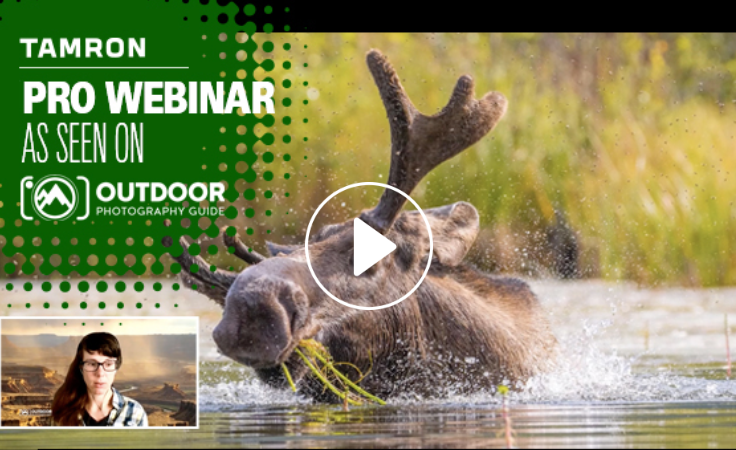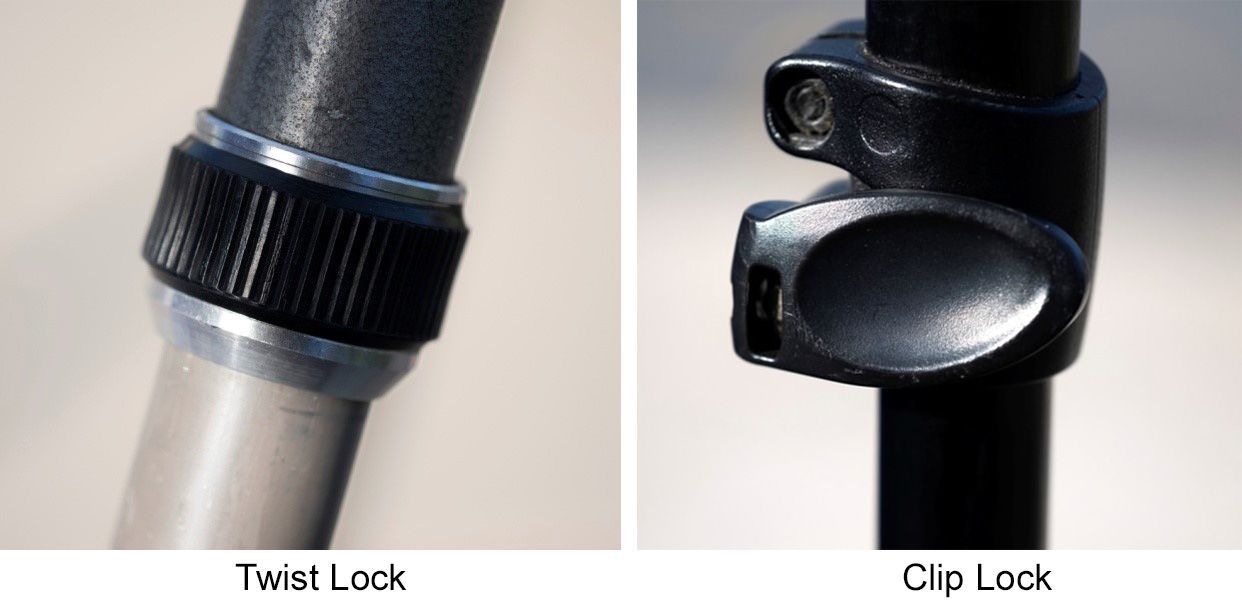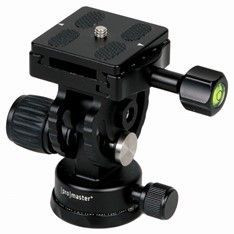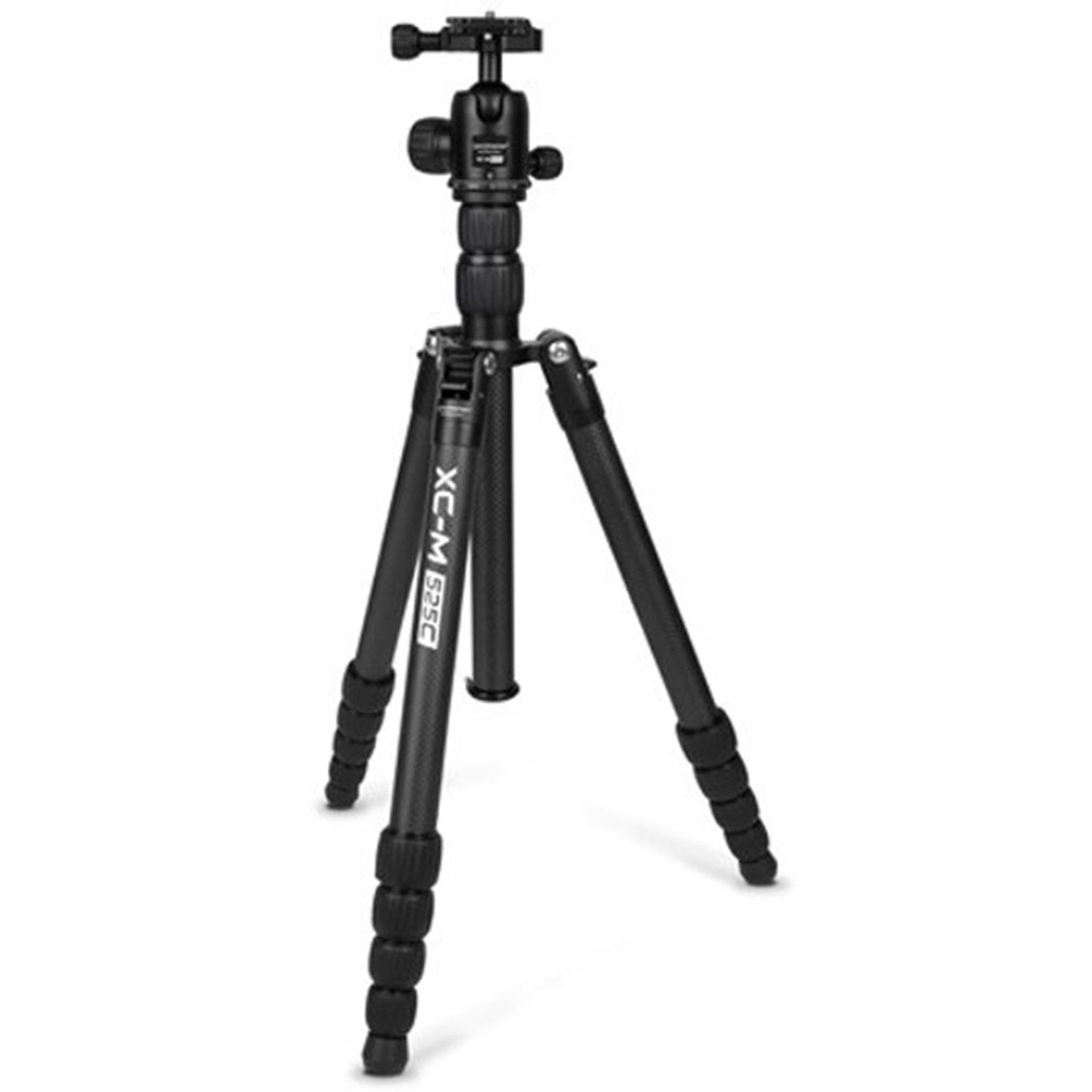Should I get a monopod or tripod?
Some people wonder, should I get a monopod or a tripod? What will work best for me?
For starters, it depends on what kind of photography you do the most. If the answer is that you do all types of photography the answer might be that you need both! Luckily some tripods have a monopod option built-in but I will touch on that later.
First I will tell you that for me, and for the kind of photography that I do, it would be rare to see me taking a picture without a tripod. I shoot a lot of landscapes and buildings so I find that my tripod is invaluable for checking and double-checking what I have in the viewfinder. Is my horizon level is the first question? Have you ever seen a picture that someone took of the ocean or a lake and the horizon is not straight? Have you ever looked out over a body of water and noticed it was tipped. I hope not! I also want to check how trees or buildings are framed in the viewfinder. Using a tripod encourages us to look at our composition more carefully. A tripod forces me to be more deliberate about my composition.
When you are shopping for a tripod, there are quite a few things to take into consideration. A tripod is used to provide a safe and stable platform for your camera. In general, heavier is better. If you go for a lightweight tripod you can always use a stone bag to add some pounds. A stone bag is just a bag that you hang from the bottom of the center column that you fill with stones to add some weight. When you are done shooting you dump the bag leaving the stones where you found them and off you go continuing your adventure with your lightweight tripod.
The first thing I would consider is height. Look for a tripod that is tall enough so that if you are aiming the camera at a high object, for example, an eagle in a tree or some detail on top of a tall building, you don't need to crouch down to look through your camera. Also on the question of height, one of the accepted facts is that your camera is going to be held more still if it is on a tripod that is tall enough without raising the center column or at least not having to raise it to the maximum height. Tripods that get tall are generally longer when collapsed so they tend to be harder to transport. But, not always. Some tripods have more leg sections than others, and many of these get tall enough and close down compact enough that they are still convenient to carry.
Taller tripods also tend to be on the heavier side. But, not always. This brings me to the material used in the construction of the tripod. A carbon fiber tripod that can reach the height you are looking for and have enough leg sections so that it collapses down to a nice size for transport may not be much different in weight than an aluminum tripod that is shorter and does not collapse. But everything comes with a price. True, a carbon fiber tripod with more leg sections is going to cost you more money. The cost-benefit analysis is something that each person has to calculate themselves. One person may be willing to carry more weight than another person. A shorter person may decide they do not need a taller set of legs. Then there is the person that does not care what it is going to cost. My compliments!
There are many options when selecting a tripod.
The type of leg locks is one option. Some people prefer the clip locks. Some people prefer twist locks. That is a matter of personal choice. I have both types so I suppose I can not be much help with that. You will have to see which one you like. I will say that the clip locks are faster. Occasionally the clip locks may need to have the tension screw adjusted so that they lock properly. The twist locks never need to be adjusted..
Some have center columns that can tip sideways for shooting straight down or allowing your lens to get very close to the ground for those shots of tiny mushrooms.
Most of the tripods you will encounter today have legs that kick out so you can adjust the angle of the legs. This makes it easy to set up the tripod on uneven ground. Or even on a stairway if you need to do that.
The next choice is going to be the type of head.
There are ball heads, three-way pan-tilt heads, geared heads, and fluid heads. Fluid heads are for video. In this article, I will stick to heads used for still photos.
For my first 30 years of photography, all I used was a three-way pan-tilt head and it worked pretty well for me. Then, I went to a ball head and that was OK but for the kind of pictures I take, it was not the best. For a short time, I went back to the old reliable three-way. Then I discovered the geared head.
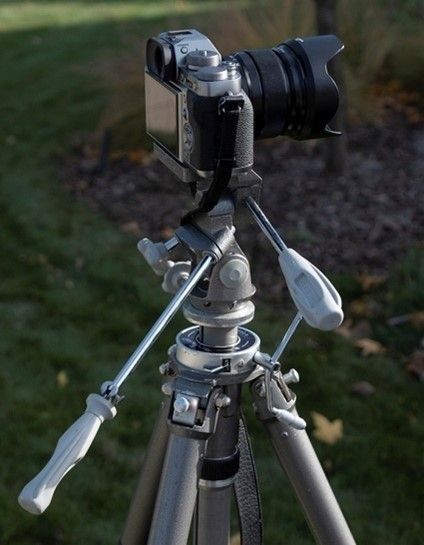
Head selection is all a matter of what you shoot. As I said I do a lot of landscapes and buildings. But it does not end there for me. I shoot a fair amount of macro work as well as a ton of night shooting. I shoot some wildlife and birds but for that, I use a monopod.
The ball head is probably the all-a-round most popular. It is the fastest head to use so for sports, wildlife, and portraits. Typically you have one lock that unlocks all of the head movement. On the three-way head, you have 3 locks to loosen.
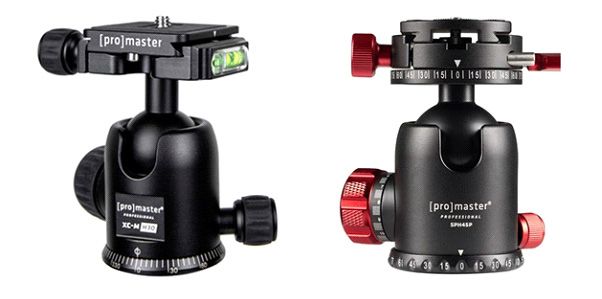
The 3-way Pan Tilt Head is easy to adjust but not as quick as the ball head.
The geared head is the slowest to use but the most exact in adjustment.
The geared head has three-way adjustment but instead of the screwdriver type handles of my three-way pan-tilt, it has knobs that I turn to make adjustments. Each of the 3 adjustments has two knobs.
The star-shaped knob on my Benro is for making a quick, rough adjustment. Once I have done that I turn the round knob for the final adjustment. As I turn it the head moves ever so slightly permitting extremely deliberate micrometer adjustment. This is slow but when I am lining up a shot of architecture or a landscape, but it works great. It is super for shooting the moon or Milky Way. When I am shooting macro it lets me get the precise adjustment that I need when working close to a subject with my macro focus stage. Most heads today have a quick-release plate so you aren't always screwing and unscrewing your camera from the head. Manufacturers use different plates. The most common today is the Arca-Swiss type. You want to stick with one plate so they fit your tripod head and monopod head and any other equipment you plan to mount such as a macro focusing stage or rail.
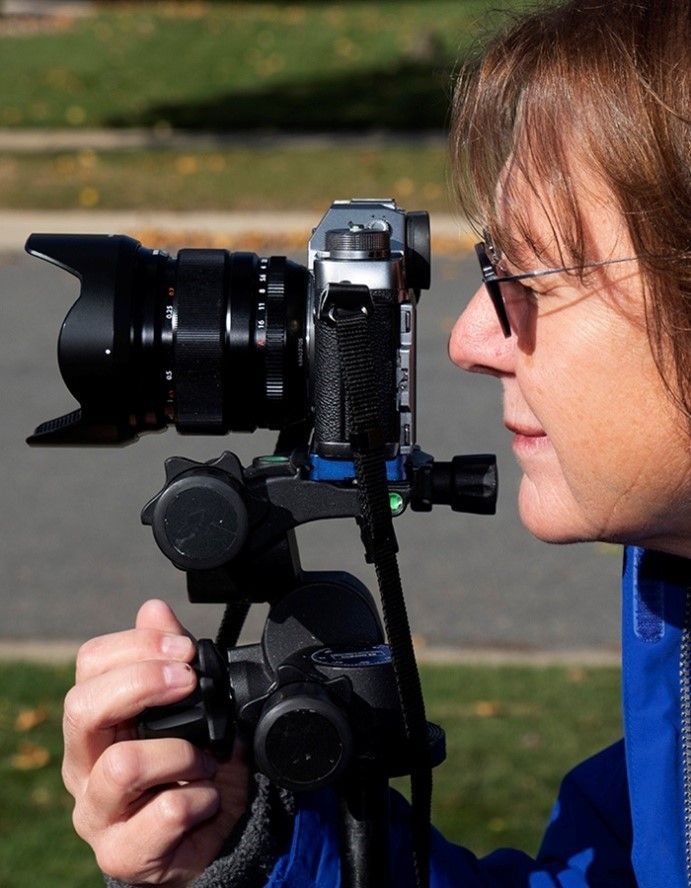
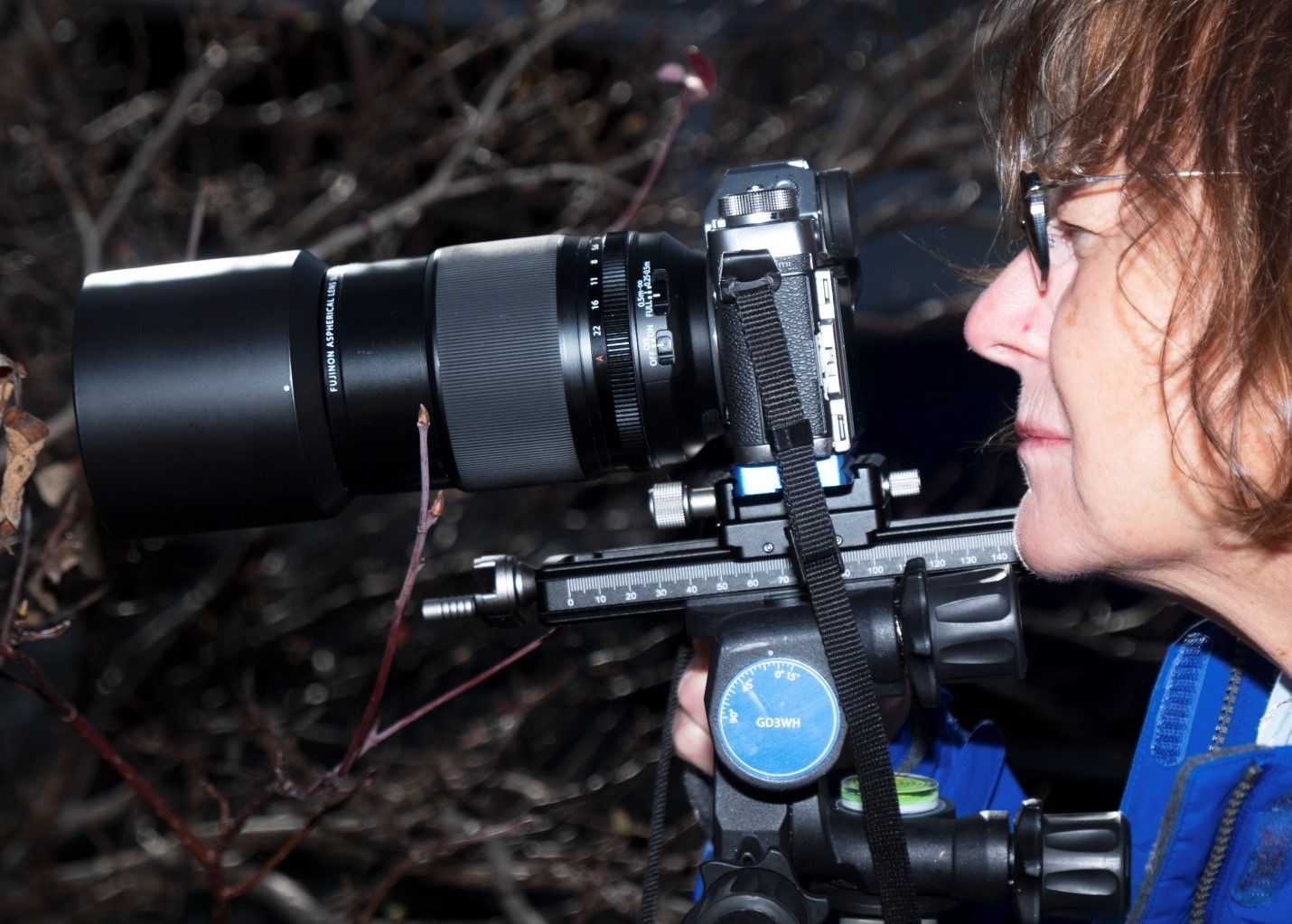
A slow and deliberate process to be sure. But using a macro focusing rail with a geared head affords excellent control of positioning and focusing when doing very close work. If you add a tripod with a gear-driven column to the setup then you have the ultimate as far as critical control.
Monopods
As I said, I use a tripod a lot, but there are times when the only thing that will work for me is my monopod. Monopods also have options. For tripods, I have carbon fiber and aluminum. I decided to go with a carbon fiber monopod. While I am not too concerned about the weight of my tripod, (I have 4 to pick from) my monopod has to be carbon fiber. For my monopod, I want lighter weight.
I use my monopod for photographing birds. When I use my monopod, I'm invariably using my fairly heavy Fuji 100-400mm lens, often with a 1.4 teleconverter. I need a solid monopod. I need the monopod to support the weight because while looking through the camera waiting for a bird to take off my arms would get too tired. This is also important if you shoot sports. If your camera is not in the up, ready to shoot position at all times during an event, you are going to miss shots. No one can hold a big lens up “at ready” to shoot during an entire game or auto race. The monopod can easily be used when sitting in the stands because you just have one leg between your feet.
On my monopod, I have the ProMaster MH-02 head. It is a tilt head which is all I need on a monopod. Some people use ball heads but I tried one and did not like it because when I would unlock it, I felt that the monopod and camera were a little bit out of control. I am trying to be diplomatic about a ball head on a monopod. Is anything “a little” out of control? Another thing I like about the MH-02 is that it uses the same Arca Swiss type quick release plate that my Benro geared head and my macro focusing stage use. This makes switching between the monopod, tripod, and stage seamless.

The Promaster MH-2 Head on my monopod is just the ticket for shooting detail on the tops of tall buildings. Birds, planes, and UFOs.
Monopods work great when you are in tall grass where setting up a tripod would be difficult. You can also use them in the stands. If you are sitting in the bleachers at a softball game you can lower it so your camera is right in front of you up and ready to shoot so you don’t miss a great shot.
Some tripods have a leg that unscrews and becomes a monopod. That might be something to look into when shopping.
The Promaster XC-M 525 CK is a Carbon Fiber tripod with a built-in monopod. A friend of mine has that one and it works great for her. It comes with a ball head and it uses the popular Arca-Swiss type plate. At $269.99 it would get most people off to a good start.
Recent POsts








